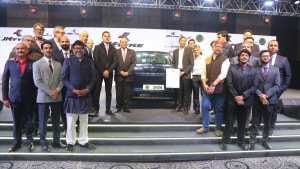Cars coming to India in 2020: Electric Vehicles
The year 2020 will not only see manufacturers see focusing on BSVI compliant cars and motorcycles, but some will take an extra step to complete negate the carbon emissions and venture into the EV (Electric Vehicle) space. Following are a few EVs that have been confirmed for this year and some we anticipate would break cover by the change of calendar.

Quipped with Tata's newly developed Ziptron drivetrain, the Nexon EV made a debut last month. The Nexon EV will be launched in January 2020 and be priced between Rs 15 to 17 lakhs. The Nexon EV's lithium-ion battery is of 30.2 kWh capacity and feeds a permanent-magnet AC motor that puts 129PS and 245 Nm through the front wheels. This allows for a brisk 0 to 100 kmph time of 9.9s, the top-speed hasn't been mentioned but as per Tata Motor's internal testing, the SUV will do over 300 km on a full charge.
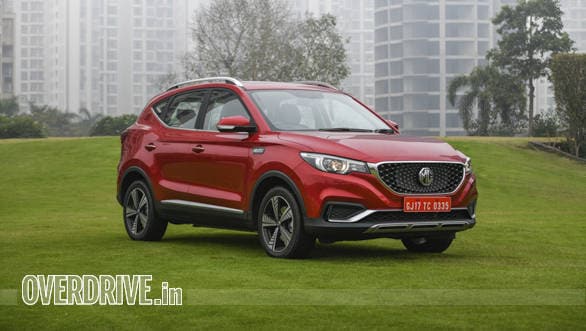
G Motor India has officially unveiled the ZS EV all-electric SUV in the country at the DriEV conference in Delhi, ahead of its launch slated for early January. The ZS EV is still powered by a 143PS/350Nm electric motor driving the front wheels, drawing power from a 44.5kWh liquid-cooled battery pack. Official driving range for the ZS EV stands at 340km per full charge, with five recharge options for customers. Apart from the onboard charger that juices up the ZS EV from zero in between 6-8 hours, MG will also set up a 50W fast charger network with partner Fortum in five cities across India to begin with, apart from offering 'charge on the go' access to customers without access to a charger while on the road
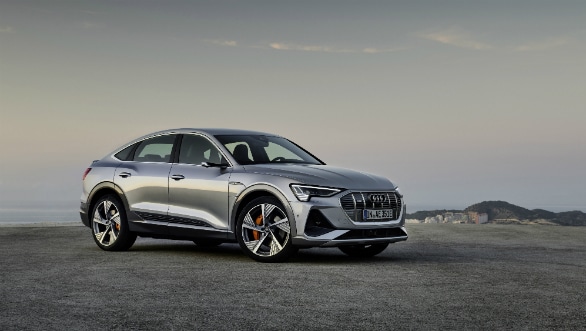
Audi India has showcased the Audi e-tron electric SUV in India, ahead of its launch in the next few months. This is the first all-electric SUV from the German brand and is a major component of its new strategy for India, which is now focused on petrol and electrified models. The brand has updated the e-tron internationally, which has made it more efficient. We think this updated version is the one that might come to India. The upgrades to the e-tron have added 25 km to its range. This has led to the range get to 436 km on the WLTP cycle. The improvements have come via the use of a new type of wheel brake which has led to lesser residual brake torque. Another improvement is that the front motor can be entirely decoupled from the propulsion system. The e-tron functions only on its rear motor under normal loads now with the front motor only waking up under heavier inputs. The 96 kWh battery also features better charge density now with a usable capacity of 86.5 kWh. We think Audi India will bring the updated e-tron to India when it introduces it here. The EV is being brought in as a CBU under the new rule that allows 2,500 units to be directly imported by a manufacturer. It expects to sell around 200 of these SUVs here in a year and order books have already started filling up.
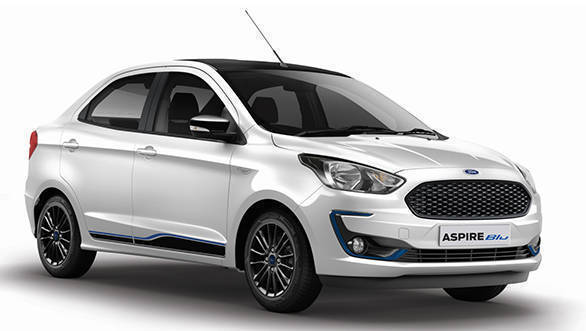 Image of the Ford for representation only.
Image of the Ford for representation only.
Ford-Mahindra Aspire EV
Mahindra and Ford have announced they will co-develop a mid-sized SUV based on a Mahindra platform. This car will be sold independently by both companies under separate brands. Mahindra and Ford also announced plans to co-develop a suite of connected car solutions for consumers. And the first EV to spawn from the joint venture could be the Ford Aspire EV. The battery-powered compact sedan is mainly expected with a 300+ km range and a fast-charging facility. The drivetrain could soon be carried over to the Ford Figo EV as well. Expect the new EV from the JV to be priced between Rs 6 to 7 lakh ex-showroom.
What's more, is the newly developed platform could be flexible enough to house an I.C engine as well for buyers who would want to opt for petrol or diesel-powered cars. This could mean the platform could also spawn the next-generation Ford Figo and Aspire.
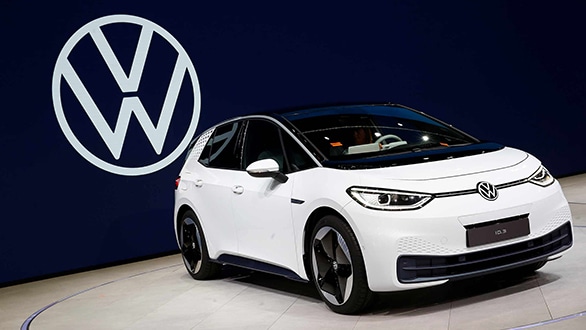
Volkswagen ID 3
The Volkswagen ID 3 is the first car from its all-electric ID sub-brand and is expected to be the next great mass-market car for the brand after the Beetle and Golf. The 3 in its name signifies just this. The ID 3 concept is what will be showcased at this year's Auto Expo, however, the production-spec may vary. The ID 3 is based on the VW Group's new MEB platform, and after it goes on sale in Europe in summer 2020, this platform will underpin an entire line-up of EVs including production versions of the retro-styled ID Buzz MPV and ID Crozz SUV. A larger SUV modelled after the ID Roomzz and a production version of the ID Vizzion concept will follow. In the larger scheme of things, the Volkswagen group plans on having 70 electrified vehicles in its line-up by 2028.
The ID 3 will be available in three battery sizes, which will power an electric motor fitted on the rear axle. The base version will come with a 45kWh battery pack good for 330km range (WLTP). The mid-spec car will get a 58kWh battery and 420km range. The topmost spec will give the ID 3 a range of 550km from a 77kWh unit. The new EV will also be able to add 290km of range within 30 minutes through its 100kW DC fast-charging capability. The 58KWh battery version makes 205PS and 310Nm and is good for a 160kmph top speed. Prices for the base version will start at under EUR 30,000, similar to a Golf, or Rs 23.84 lakh before taxes and duties.
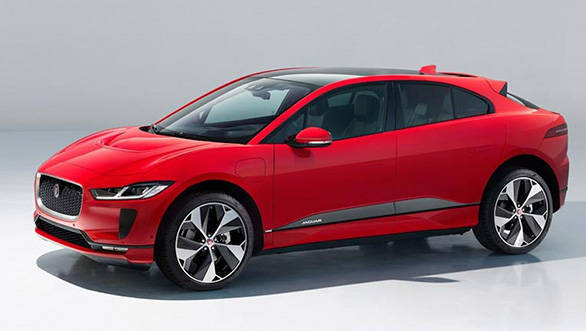
Jaguar announced that the launch of the I-Pace will take place by the second half of 2020 in the Indian market. The Jaguar I-Pace is a full electric crossover which can dart from 0-100 km/h in 4.8 seconds and has a top speed of 320 km/hr. The Jaguar I-Pace gets a 90 kWh battery and two motors to drive the wheel which essentially makes the crossover an all-wheel-drive. The motor churns out 400PS and 696Nm of torque. With a drag coefficient of just 0.29, Jaguar claims the I-Pace can do more than 500km on a single charge. The lithium-ion battery charges easily and quickly with 80-percent charge achieved in just around 90 minutes. Jaguar has incorporated technologies which have been developed from their experience in the Formula E racing series, and has said that the I-Pace will be a true Jaguar and a true driver's car.
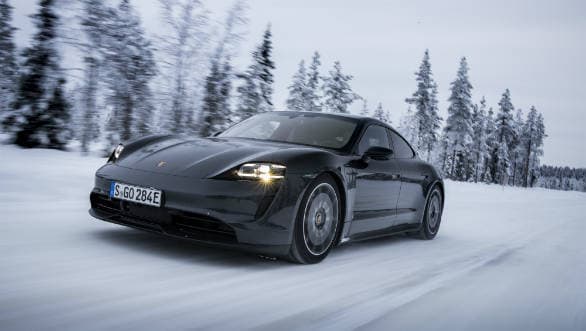
Porsche's Tesla rival, the Taycan is expected to be launched in India in the first half of 2020. The Taycan's styling seems to echo this sentiment. While the overall shape is unmistakably Porche, taking cues from cars like the 911 and the Panamera, there is a unique spin to the whole design. That said, the Taycan Turbo and Turbo S are unlikely to be launched, but the German carmakers will consider the Taycan 4S for the India market. the Taycan 4S and is available in two outputs. It uses the same dual-motor, 800V architecture paired with a two-speed transmission, but with reduced outputs. The standard Taycan 4S gets a smaller single-deck 79.4 kWh battery pack which makes 435PS, 530PS on over-boost, and 640 Nm. The more powerful Performance Plus version makes 489PS (570PS on over-boost) and 650 Nm from the two-layer 93.4-kWh battery from the Turbo versions. Both cars have a 250 kmph top-speed and can do the 0 to 100 kmph sprint in 4s. The range is 407 km with the smaller and 463 km with the larger battery pack. The Porsche Taycan 4S is now available for orders internationally with deliveries beginning in January 2020.
Starts Rs 99.99 Lakhs
-NA-
Automatic
413
664
-NA-
Starts Rs 5.99 Lakhs
1498cc
Manual
96
215
26.1 Kmpl
Starts Rs 7.75 Lakhs
1194cc
Automatic
96
119
16 Kmpl
Starts Rs 1.05 Crore
-NA-
400
696
-NA-
Starts Rs 22 Lakhs
-NA-
Automatic
176.75
280
-NA-
-NA-
-NA-
Automatic
761
1050
-NA-
Starts Rs 6.95 Lakhs
1497cc
Automatic
110
260
21.5 Kmpl
Starts Rs 13.99 Lakhs
-NA-
Automatic
129
245
-NA-

